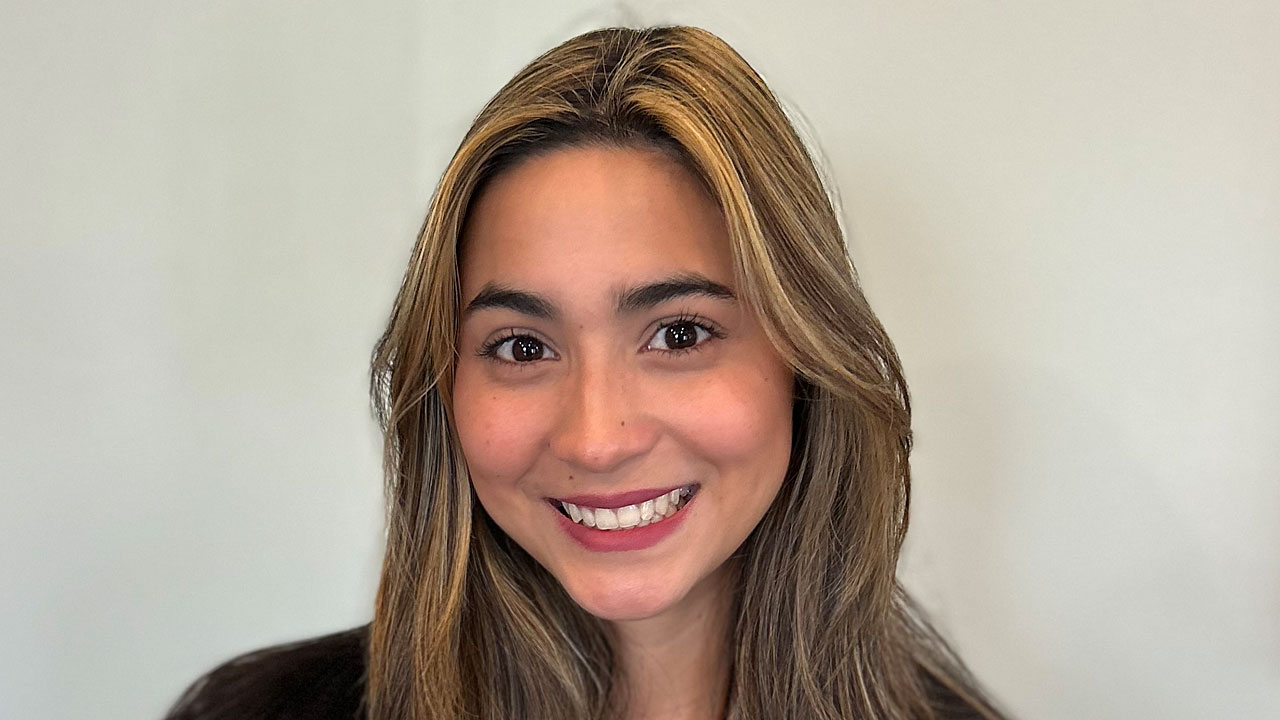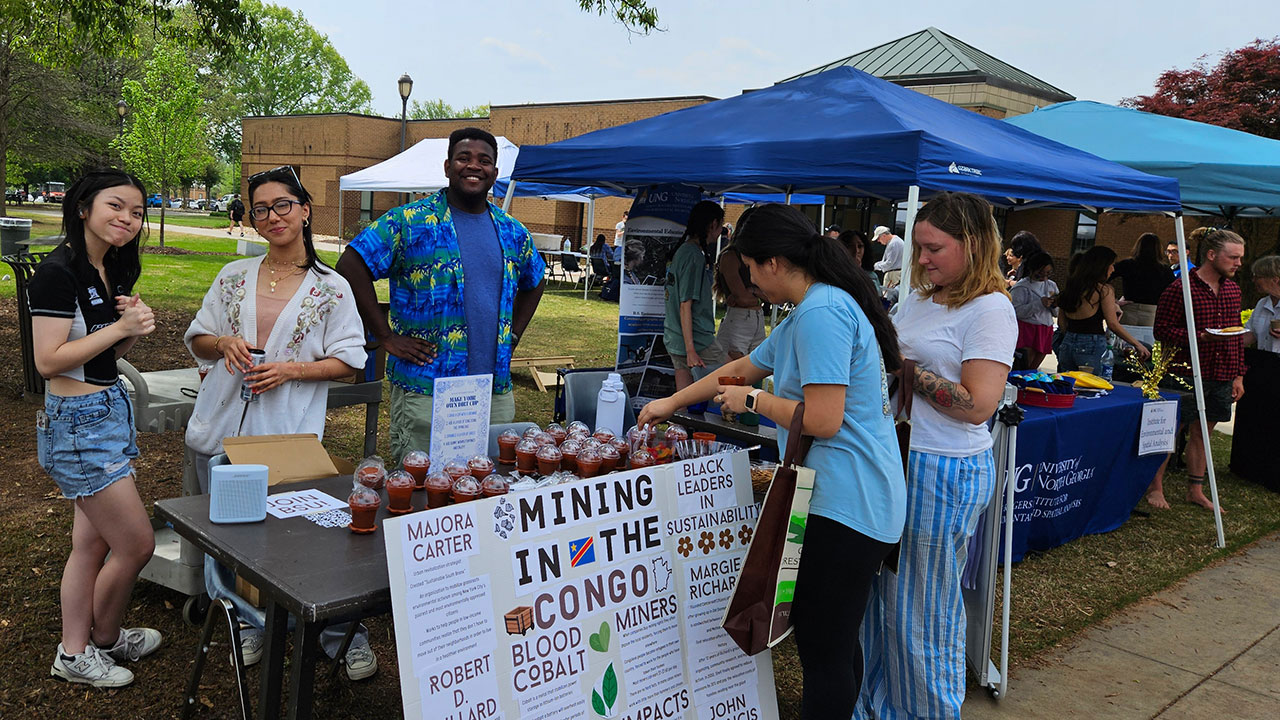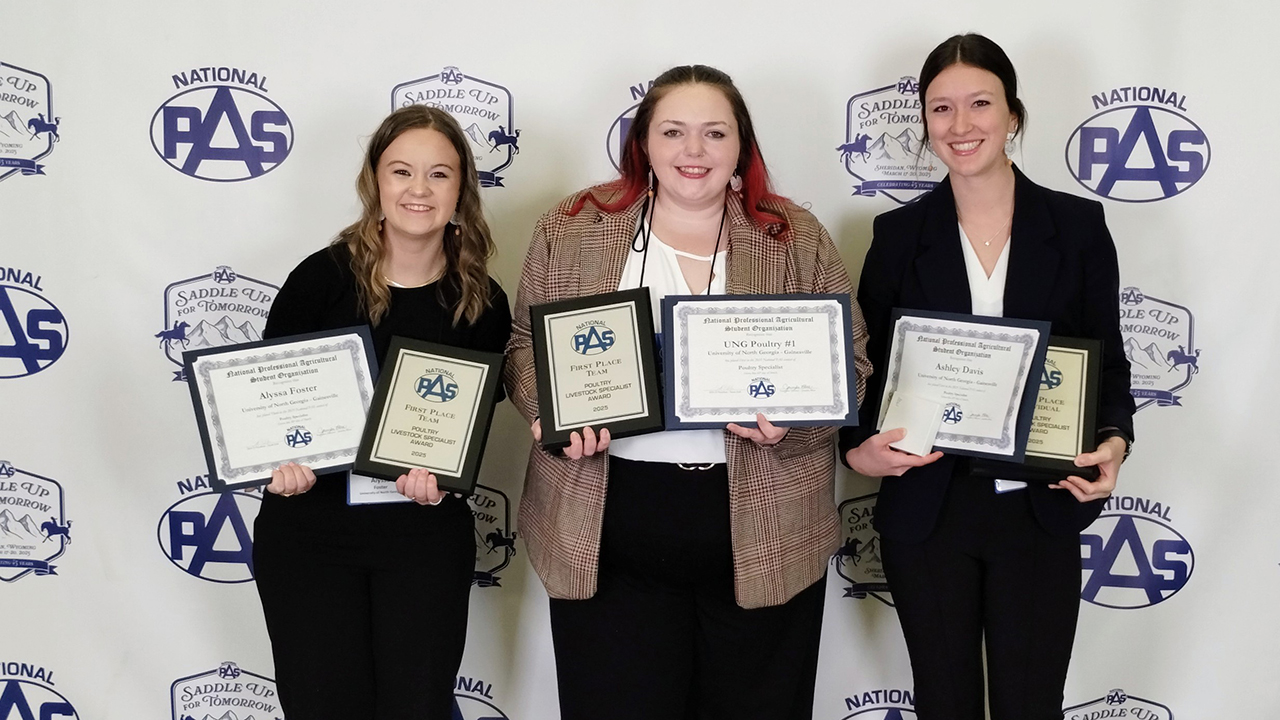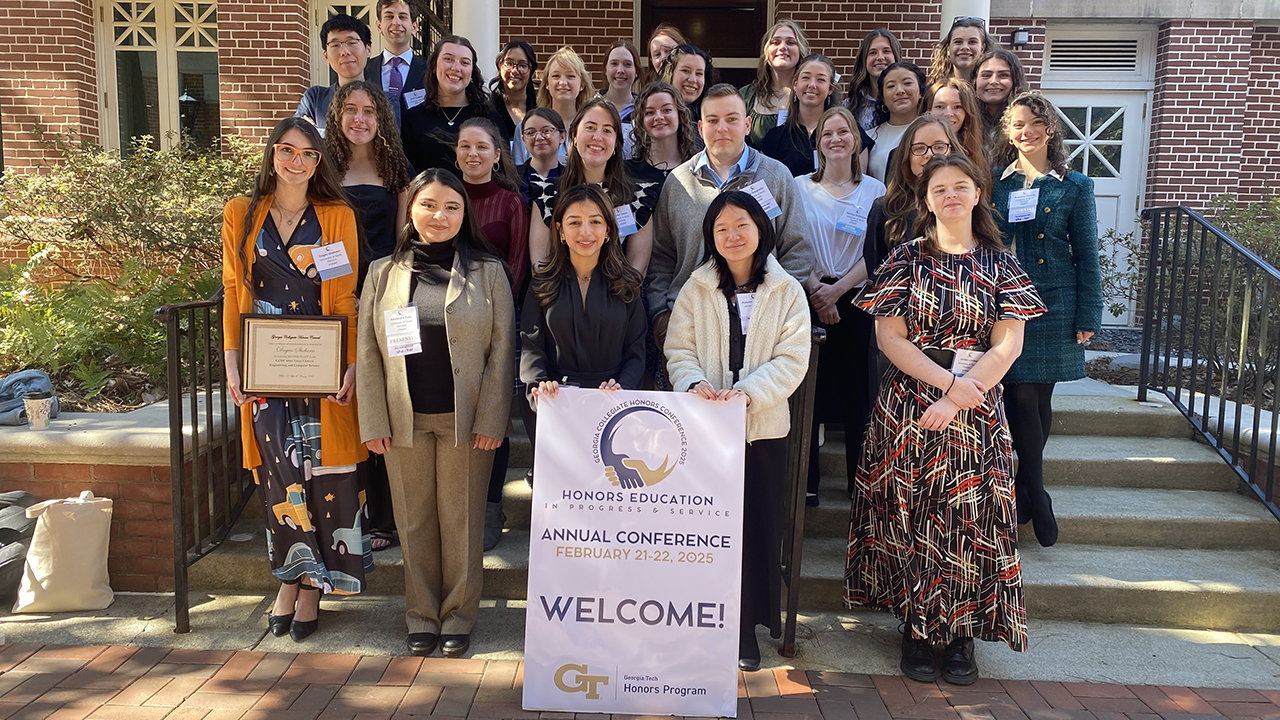Faculty, student, alumna study rock outcrops at Elachee

Article By: Staff
As a geologist, Dr. Katayoun Mobasher is always looking at rocks and their formations, especially since most of Georgia's rocks have a long history going back to about 1 billion years ago. But she is hindered by state's geology.
"Vegetation and thick soil cover obscure so much," she said. "This in turn make rocks more difficult to interpret and Elachee Nature Science Center in particular is no exception."
This summer, the professor of geology in the Lewis F. Rogers Institute for Environmental and Spatial Analysis at the University of North Georgia (UNG) seeks to solve that puzzle thanks to a Presidential Incentive Award. She and Dr. Jerry Allison, professor of chemistry in the Department of Chemistry and Biochemistry at UNG, were awarded a summer grant to investigate the geology of Elachee Nature Science Center through geochemical and petrographic analyses of rock outcrops.
"My main goal is to figure out how the rocks were formed and how they occurred in order to contribute to the better understanding of the complex nature of Georgia's geology," Mobasher said.
As the geochemist for the project, Allison's objective is to determine the elemental composition and mineral content of the rocks.
To accomplish this, the pair collects data and samples for analysis from large rock outcrops in the 1,900 acres of the environmental education center in Gainesville, Georgia. They are using geospatial information to find the outcrops and map them. Once the data is collected and analyzed, the two faculty members can contribute much-needed information about north Georgia's geological makeup.
"We are trying to add to the conversation about the geology of north Georgia," Allison said. "Anytime we add more information that leads to other questions. And those questions will need to be answered through more research."
Helping her and Allison to find the outcrops was Lee Irminger, Elachee's natural resources manager and UNG alumnus.
"He showed us several excellent outcrops that I doubt we could ever find on our own in such a short time," Mobasher said.
The research has multiple applications. The immediate benefit impacts the UNG alumna and student who have been employed on the research project. Ana Guimaraes Ferreira, a 2019 graduate, and Matt Palmer, a rising senior pursuing a degree in environmental and spatial analysis, will gain firsthand research experience.
"I am learning about geochemistry and how to use the equipment in the field and the lab," said Ferreira, who is paired with Allison on the chemistry portion of the project. "And I see how it all pulls together."
Palmer, who works with Mobasher, said he is applying his geospatial skills from class to map the rock outcrops. The Oakwood, Georgia, man said this experience will help as he applies to graduate school.
"Graduate schools like to see prospective students who have experience with research projects during their undergraduate studies," he said. "This project will give me the upper hand when applying to them."
Allison and Mobasher plan to use their research findings in their future classrooms to pique students' interest in geology, especially with such close examples.
"My students can drive five minutes away from UNG's Gainesville Campus to see these rocks closely. This helps them understand how the concepts they learn in class translates to real-world experiences," Mobasher said.
Allison said motivating students about geology will extend beyond UNG's borders.
"Elachee has prekindergarten through 12th-grade programs," he said. "With our research about the rock outcrops, they will have more information to share about rocks with the children and the public."



